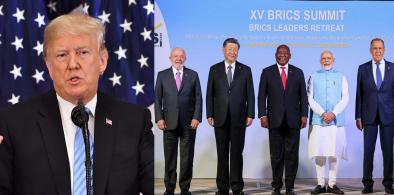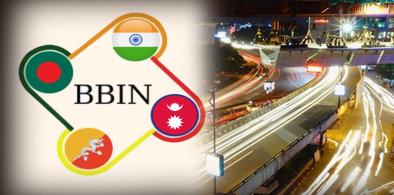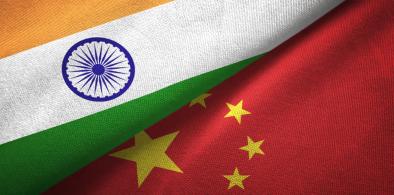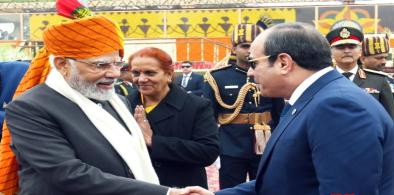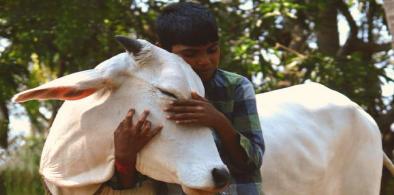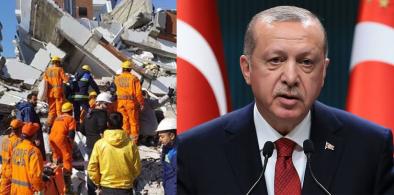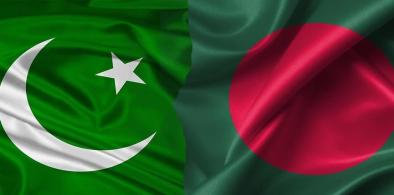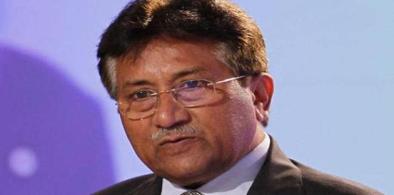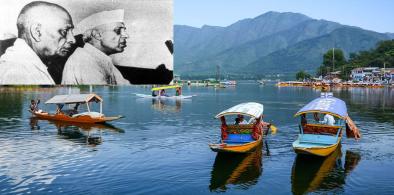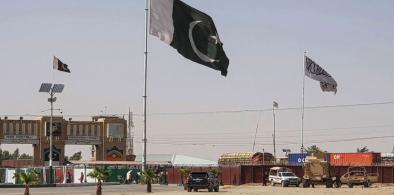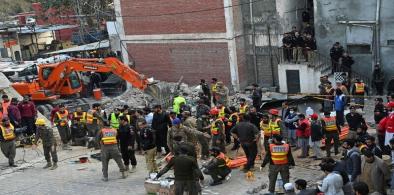India offers the opportunity to interconnect the Bangladesh, Bhutan, and Nepal electricity supply industries. The possibility of using Indian power infrastructure for electricity trade between Nepal and Bangladesh is another facet of India's neighborhood engagement.
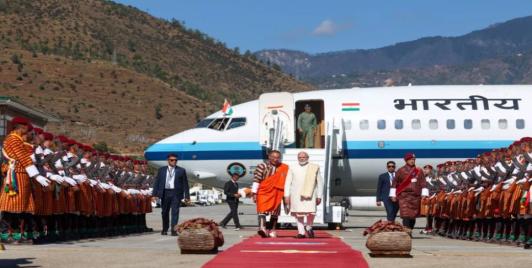
India-Bhutan Relationship Offers A Constructive Model For South Asia And A Peaceful Himalayan Region
Beyond India–Bhutan relations, the visit conveys a wider message to South Asia: cooperation grounded in respect, development, and stability remains essential in an uncertain global environment. As the region evolves, India appears to recognize the importance of maintaining strong partnerships without pressuring smaller neighbors or escalating strategic competition.
Red Fort Blast: India Facing A New Form Of Jihad?
The involvement of four doctors, one of whom allegedly executed the Red Fort blast, indicates a model that blends 'inspired' radicalisation with limited external facilitation. Interactions with certain outfits, Kashmiri terror commanders, and external handlers—if confirmed—point to an infrastructure that encourages attacks while maintaining plausible deniability.
The Nuclear Reckoning: Moment Of Awakening For India
It is time for India, along with like-minded nations across Asia, Africa, and Latin America, to articulate a shared agenda of non-alignment 2.0, not as a posture of neutrality but as a strategy of autonomy. The original Non-Aligned Movement (NAM) emerged from the Cold War’s bipolar tension; its modern counterpart must respond to multipolar volatility.
Endangered Indigenous Languages of South Asia: With Dominant Languages Replacing Mother Tongue, Are They Doomed To Die?
The world over, as is evident from the Atlas of endangered languages, there is a thrust of the dominant languages taking a precedence and most of the endangered languages are likely to disappear by 2100. Soon, possibly in the near future, the grand and great grand-children of the present generation may not be able to tell the story of their own mother tongue. Some of these languages will be lost forever and will only be limited to the pages of gazetteers and history books.
Growing India-UAE ties: Robust economic and strategic linkages, convergence on global geopolitical issues
While the I2U2 – often referred to as the Middle Eastern Quad -- grouping is a strong illustration of changing landscape of the Middle East, and India's strong ties with all the other countries which are part of the grouping, the India-UAE-France trilateral is interesting because while all three countries have robust relations with the US, there are foreign policy divergences on a number of issues.
Managing Sino-Indian relations in a turbulent world: A Chinese perspective
It is necessary for the two sides to revive their bilateral strategic dialogue, rather than just confining it to border negotiations. Both sides should also continue to attach importance to exchanging views and sending out positive signals through multilateral platforms like G20, SCO and BRICS.
Will El Sisi's visit reset India-Egypt ties and lead to regional realignments?
If Pakistan can capitalize on its close relations with Turkey in organizations like the OIC over the issue of Kashmir, India should look for possibilities to strengthen ties with its old friend Egypt whose leader Sisi has good relations with the United States, Israel and UAE. In other words, a new UAE- Israel- Egypt- India axis can be an alternative to the Pakistan- Iran-Turkey axis in an emerging global order.
To hug or not to hug the cow: The misplaced agenda of religious nationalists
As such these groups are part of an oppressive, sectarian politics, which abhors the free choice of youngsters in particular. Real reasons for this intolerant behavior have to be looked for in their overall agenda to curtail liberalism, and pluralism, and to constrain the democratic ethos of the country.
Turkey and its double-dealing with India: Will 'Operation Dost' see a change of heart in Ankara?
The duplicity of Erdogan and his dream of championing Islam in South Asia emanates from his close proximity with Pakistan, his appeasement of China and his bombastic statements to gain importance in the Muslim community. For now, India must tread cautiously and be prepared for what kind of Turkish delight its "dost" now prepares to serve in the earthquake's aftermath.
The quaint cowrie trade that once linked the Maldives with eastern India
By 1844 shells were still coming from the Maldives to Ceylon (now Sri Lanka) and Bengal, but Chittagong (now Bangladesh) and Calcutta had now replaced Balasore as the destination. Finally, by the time of World War I, this cowrie trade between Maldives and Bengal region had died down.
Bangladesh and Pakistan must build on current goodwill: It is time to move on from past bitterness
Current geopolitical realities imply that Pakistan must not interfere in Bangladesh’s internal affairs, nor question Bangladesh’s close ties with India, a country that has actively helped Bangladesh in its liberation, a relation that has passed the test of time and is historic.
Musharraf: The arrogant dictator who badly wanted a deal with India
The India factor - and the burning desire to get even militarily for the East Pakistan debacle - loomed large in whatever he did or say, especially after he became the country’s Chief Executive Officer (CEO), a designation he gave himself after seizing power in 1999 and later, as the President.
Kashmir history: Creating a binary between Nehru and Patel is a false narrative
The march of the Indian army did save Kashmir from the marauding tribals (supported by the Pakistan army). The cease-fire was declared to protect civilians and also to ensure that a peaceful solution will emerge through the United Nations. The matter of being taken to the United Nations has been criticized, but that must have been the best option in that circumstance. Patel very much approved of it.
Afghan Taliban and Pakistan: From allies to adversaries
And the Pakistani intelligence service, the ISI, began supporting elements of the Islamic State Khorasan group in Afghanistan in carrying out attacks against Taliban-ruled Afghanistan. As a consequence, the Afghan Taliban had to do something not only to see off the new Pakistani challenge but also to unite the broken country behind it. So, it re-established its links with the Pakistani Taliban in carrying out attacks within Pakistan and also increased the level of hostility along the Durand Line.
'Ideologically confused' Pakistan's murky past haunts its present and future
Pakistan had assiduously sought to acquire “strategic depth” against India in Afghanistan by installing the Taliban, but that has now becomes its “terror depth,” security analysts say. They lament that the western border has become "riskier" than the eastern one with India.
Is Pakistan on the cusp of unbuilding from inside?
Every chance for Pakistan to swiftly achieve stability and peace is lost due to excessive external dependency on foreign aid, vulnerability to domestic political crisis and shortage of good governance in both vision and practice. It would be unrealistic to expect Pakistan to make the best out of its foreign relations at the geopolitical and international stage in the absence of internal stability.
Three South Asian nations - and common factors in their economic downslide
In post-colonial South Asia, the British who ruled and plundered the region also sowed the seeds of ‘divide and rule’, dividing the people along Hindu-Muslim or Sinhala-Tamil lines. Partition of the subcontinent was also a result of the same policy.
Indian action-hero SRK's latest film is a resounding thumbs-down to cancel culture; box-office success sends out multiple messages
With India's pluralist traditions coming increasingly under question under a Hindu majoritarian dispensation, and a vicious call-out culture directed insidiously against Muslim stars and their films from Bollywood, the overwhelming popular response to the film - with social media images of people dancing in the aisles and in front of the screen across cinema theatres - has given a resounding thumbs-down to the growing cancel culture and redeemed the country's secular credentials that the world has long known and admired.




